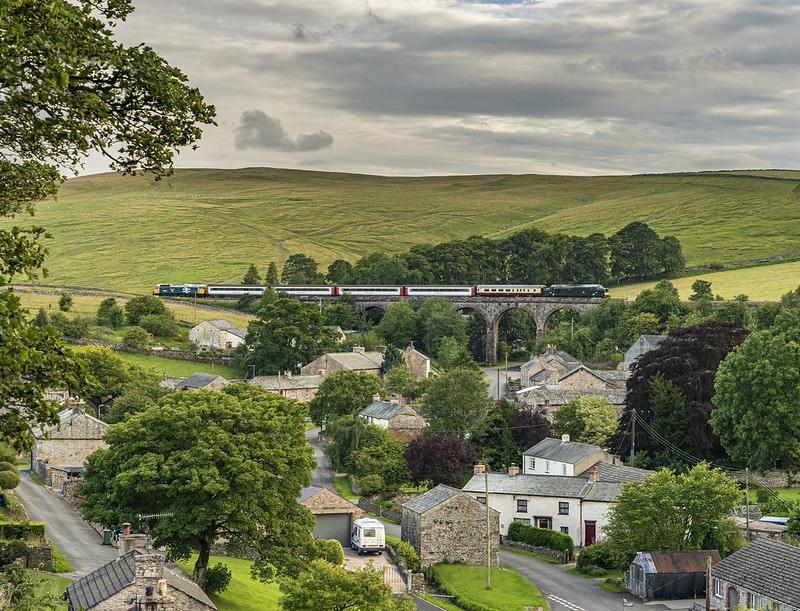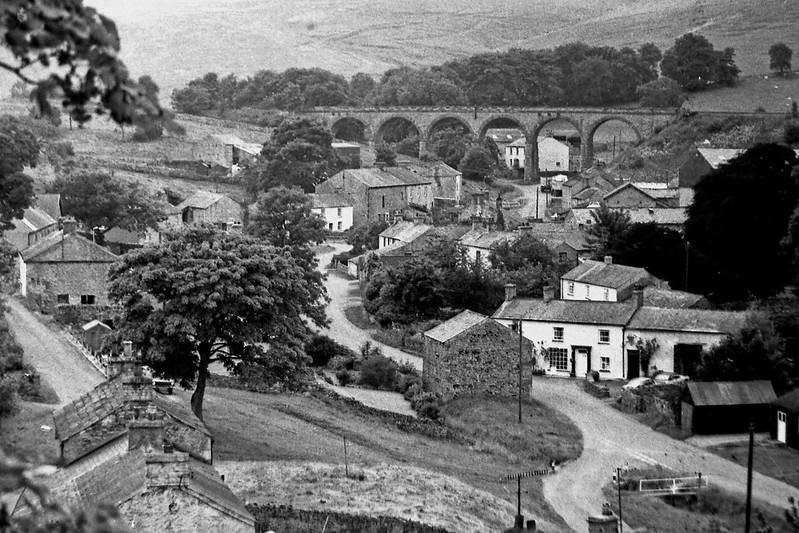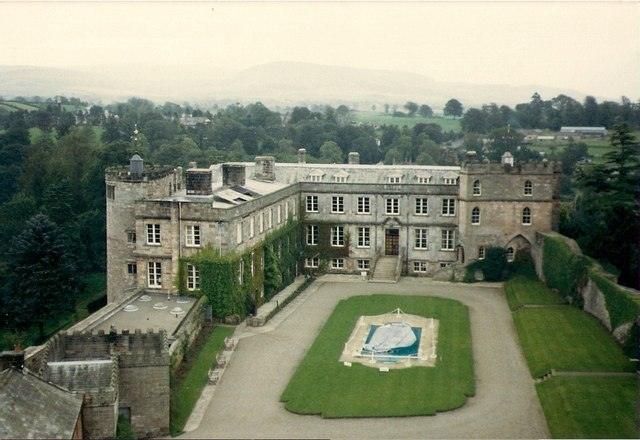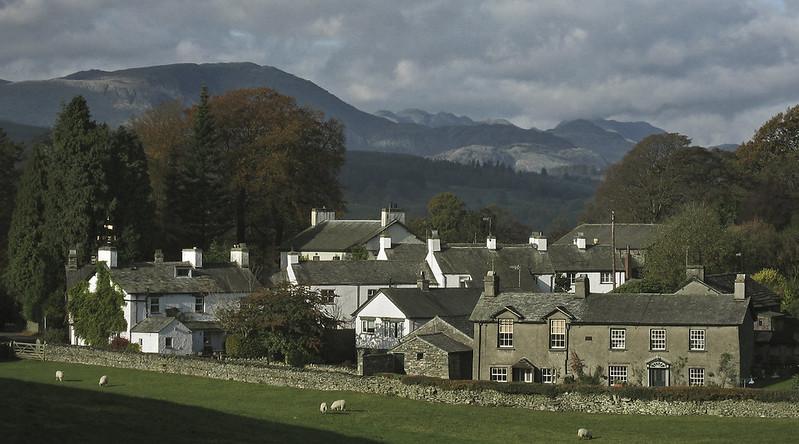Updated 09/07/2025
Key Takeaways: Crosby Garrett
- Historic Village: Crosby Garrett is a small rural parish in Cumbria, England, with roots dating back to the medieval period and evidence of prehistoric and Roman settlements.
- Archaeological Significance: The discovery of the Crosby Garrett Helmet in 2010 revealed a previously unknown Romano-British settlement, rewriting local history and highlighting the village’s Roman connections.
- Scenic Location: Nestled in the Eden Valley, the village offers picturesque landscapes, upland farmland, and easy access to both the Lake District and Yorkshire Dales National Parks.
- Railway Heritage: The Settle–Carlisle Railway, including the iconic Crosby Garrett Viaduct, is a defining feature, attracting train enthusiasts and outdoor adventurers alike.
- Rich Community Life: Despite its small size, the village boasts historic buildings, traditional events, and a strong sense of community rooted in both Anglican and nonconformist religious traditions.
- Tourism and Accommodation: Visitors can choose from charming cottages, unique holiday rentals, and traditional B&Bs, enjoying peace, privacy, and authentic village life.
- Ideal Base for Exploration: Crosby Garrett’s central location makes it perfect for exploring Cumbria’s treasures, including historic towns, castles, walking trails, and outdoor activities.
- Best-Kept Secret: The village remains a tranquil, less-touristed destination, offering a genuine rural experience and the chance to discover one of Britain’s hidden gems.
Introduction to Crosby Garrett
Crosby Garrett is a small rural parish and village in the Eden district of Cumbria, England, historically part of Westmorland. Situated in the Upper Eden Valley, the village lies amidst upland farmland and fells, with its highest point at Nettle Hill (382 m / 1,254 ft). The settlement itself is positioned in a post-glacial hollow at approximately 213 m (700 ft) above sea level.
Key Facts
- Located in the Eden district, Cumbria
- Historically part of Westmorland
- Highest point: Nettle Hill (382 m / 1,254 ft)
- Village elevation: approx. 213 m (700 ft)
Etymology
The name "Crosby Garrett" is of Scandinavian and Norman origin. "Crosby" derives from the Old Norse Krossa-byr, meaning "village with crosses," while "Garrett" refers to the Norman personal name Gerard, likely an early lord of the manor.
History
Crosby Garrett is notable for its prehistoric and Roman archaeological remains, including Bronze Age burial cairns and Iron Age/Romano-British settlements. In 2010, the Crosby Garrett Helmet, a rare Roman cavalry parade helmet, was discovered near the village.
Religious Heritage
- St Andrew’s Church: Features an Anglo-Saxon chancel with later medieval additions.
- Nonconformist religious practice: Baptist and Methodist chapels established from the 18th and 19th centuries.
Community and Economy
Crosby Garrett has traditionally been a small farming community, with a population rarely exceeding 200 except during the construction of the Settle–Carlisle railway in the 1870s. The Crosby Garrett viaduct is a prominent feature of the railway, although the village station closed in 1952. In recent decades, tourism has grown, with several properties now serving as holiday homes.
Notable Features
- 17th-century houses
- Tithe barns
- Clapper bridges
- Community events: Open Gardens, Hootabilly music festival

A Village That Rewrote History Books
In May 2010, Crosby Garrett, a quiet Cumbrian village, unexpectedly became the focus of international attention when a metal detectorist unearthed a remarkable Roman cavalry helmet in a local field. The Crosby Garrett Helmet is a stunning copper-alloy artefact, dating from the late 2nd or early 3rd century AD, and is considered one of the most significant archaeological finds in Britain.
What made this discovery so extraordinary was not just the helmet’s craftsmanship, its beautifully sculpted face mask and griffin crest, but also its context. Before the find, there was no official record of Roman settlement at Crosby Garrett. Subsequent archaeological investigations revealed the helmet had been buried within a previously unknown Romano-British farming settlement, complete with earthworks, field systems, and evidence of livestock rearing and Roman pottery. The site’s strategic location, near a Roman road and not far from the auxiliary fort at Verterae (Brough Castle), suggests the area was more deeply connected to Roman Britain than previously thought.
The helmet itself was found deliberately folded and buried in a specially constructed stone feature, possibly as a ritual offering or memorial. Coins dating to the 4th century AD were also found in the same feature, hinting at the helmet’s continued significance long after its manufacture. The finds not only shed light on the lives of local inhabitants, some of whom may have served as cavalry auxiliaries in the Roman army, but also rewrote the historical narrative of the region, revealing a vibrant, Romanised community where none was previously documented.
"The Crosby Garrett helmet is an immensely interesting and outstandingly important find… exceptional and, in its specifics, unparalleled. It is a find of the greatest national (and, indeed, international) significance…” – Dr. Ralph Jackson
Today, the helmet stands as a symbol of how a single discovery can transform our understanding of the past, placing Crosby Garrett firmly on the map of Britain’s most important archaeological sites.

All Aboard the Scenic Route
The iconic Settle-Carlisle Railway passes right through Crosby Garrett, creating one of those picture-perfect moments that make you reach for your camera. While the original station may be disused, the railway still offers some of England's most spectacular train journeys, winding through the dramatic Yorkshire Dales and Eden Valley landscapes.
Highlights of the Journey
- Crosby Garrett Viaduct: Just south of the village, the railway soars above the rooftops on the Grade II listed Crosby Garrett Viaduct. Built in 1875, this striking structure features six arches, stands 55 feet (17 m) high, and spans 110 yards (100 m), carrying trains high above the beck and fields below.
- Iconic Scenery: Passengers are treated to sweeping views of rolling farmland, wild fells, and stone-built villages as the route carves through the heart of northern England. The line is famed for its viaducts, tunnels, and the majestic backdrop of the Pennines.
- A Magnet for Walkers and Cyclists: The railway is a gateway to adventure, with stations providing easy access to walking trails, cycling routes, and the Three Peaks of the Yorkshire Dales. Many visitors use the train to begin or end scenic hikes, making it a favourite among outdoor enthusiasts.
- Historic Stations and Steam Trains: Restored Victorian stations along the route evoke the golden age of rail travel. On special occasions, steam-hauled trains traverse the line, delighting trainspotters and photographers as they cross iconic structures like the Ribblehead and Crosby Garrett viaducts.
For active travellers, the village sits directly on the Pennine Bridleway National Trail, making it a prime stop for hikers, cyclists, and horse riders. Think of it as your gateway to the North Pennines – rugged, wind-swept fells that stretch as far as the eye can see, offering everything from gentle valley walks to challenging hill climbs.
Impact on Crosby Garrett
The railway’s construction brought a wave of workers and prosperity to Crosby Garrett in the late 19th century, briefly swelling its population and forever altering its landscape. Although the village station closed in 1952, the line still passes through, and the viaduct remains a defining feature of the village. Today, the Settle–Carlisle Railway is not just a means of transport but a celebrated journey in its own right, drawing tourists who marvel at the same vistas that have captivated travellers for generations.
Whether you’re a railway enthusiast, a walker, or simply seeking the romance of slow travel, the scenic route through Crosby Garrett offers a unique window into England’s wild beauty and rich heritage.

Staying in Britain’s Best-Kept Secret
Tucked away in the rolling hills of Cumbria, Crosby Garrett offers visitors a rare chance to experience the quiet charm of one of Britain’s most unspoiled villages. Far from the crowds, this hidden gem invites you to slow down, soak up the scenery, and discover a way of life that feels both timeless and welcoming.
Accommodation Options
Whether you’re seeking rustic luxury, a cosy cottage, or a traditional bed and breakfast, Crosby Garrett and its surrounding area provide a range of inviting places to stay:
- Charming Cottages: Restored barns and stone cottages like The Hayloft, Beckside Barn, and Stallion Barn offer a blend of comfort, character, and stunning countryside views. Many are self-catering, perfect for couples or families looking for privacy and flexibility.
- Unique Holiday Rentals: From luxury barn conversions to dog-friendly cabins, local rentals are highly rated for their location, warmth, and thoughtful amenities. Options like Turnip House and Muddy Boots immerse you in rural tranquillity, with walks from your doorstep and easy access to the Lake District and Yorkshire Dales.
- Bed & Breakfasts and Guest Houses: For a more traditional stay, local B&Bs provide a warm welcome and hearty breakfasts, often in historic buildings with original features. Prices are competitive, and hosts are known for sharing insider tips on the best walks and sights.
- Nearby Inns and Hotels: If you prefer a classic inn or small hotel, nearby towns such as Kirkby Stephen offer additional choices, including riverside pubs and boutique hotels with excellent dining.
What Makes It Special
- A Walker’s Paradise: Step outside and you’re on the edge of some of England’s best walking and cycling routes, from gentle valley strolls to more challenging fell hikes.
- Local Hospitality: Many accommodations are run by local families who take pride in sharing their village’s story and ensuring guests feel at home.
- Authentic Village Life: Stay in Crosby Garrett and you’ll experience the rhythms of rural England, stone barns, grazing sheep, and the timeless beauty of the Eden Valley.
- Peace and Privacy: With fewer tourists than the Lake District hotspots, you can truly unwind, enjoying star-filled skies, quiet lanes, and the sound of birdsong.
Tips for Your Stay
- Book Early: With limited accommodation, especially in peak walking and cycling seasons, it’s wise to reserve well in advance.
- Bring Your Boots: The best way to explore is on foot, pack sturdy shoes and be ready for adventure.
- Enjoy Local Produce: Many rentals and B&Bs offer breakfast baskets or recommendations for farm shops and local pubs.
For those who prefer camping, nearby Crake Trees Manor offers everything from traditional pitches to glamping pods, complete with a farm café and some of the best stargazing in northern England. Most accommodations are pet-friendly, recognising that many visitors want to explore these magnificent landscapes with their four-legged companions.
Your Base for Exploring Cumbria’s Treasures
Nestled in the heart of the Eden Valley, Crosby Garrett serves as an ideal base for discovering the rich natural beauty and cultural heritage of Cumbria. Its tranquil setting, combined with easy access to some of the region’s most iconic attractions, makes it perfect for travellers eager to explore beyond the well-trodden paths.
Gateway to the Lake District and Yorkshire Dales
Proximity to National Parks: Just a short drive from Crosby Garrett, the Lake District and Yorkshire Dales National Parks offer breathtaking landscapes, from serene lakes and rugged fells to picturesque villages and historic sites.
Scenic Drives and Walks: The village provides a peaceful retreat after a day of exploring famous spots like Ullswater, Windermere, or the Three Peaks. Numerous walking routes begin nearby, allowing visitors to immerse themselves in the countryside at their own pace.
Nearby Attractions and Activities
Historic Market Towns: Kirkby Stephen and Appleby-in-Westmorland are close by, offering charming streets, local shops, and traditional markets that showcase Cumbrian culture and crafts.
Castles and Heritage Sites: Explore nearby Brough Castle, a Norman fortification, or venture further to the medieval Muncaster Castle, both rich in history and surrounded by beautiful grounds.
Outdoor Adventures: From cycling along quiet country lanes to fishing in local rivers and lakes, the area caters to a wide range of outdoor interests.
Convenient Amenities with Village Charm
Local Pubs and Eateries: After a day of sightseeing, enjoy hearty meals and friendly hospitality at Crosby Garrett’s traditional pubs and nearby eateries, featuring local produce and seasonal dishes.
Accommodation Variety: Whether you prefer quaint cottages, cosy B&Bs, or self-catering barns, the village offers comfortable lodging options that blend rustic charm with modern convenience.
Why Choose Crosby Garrett?
Peaceful Retreat: Escape the crowds and enjoy the serene atmosphere of a genuine rural community.
Central Location: Perfectly positioned for day trips across Cumbria’s diverse landscapes and cultural highlights.
Authentic Experience: Experience the warmth of village life while having easy access to the treasures of Cumbria.
Crosby Garrett is more than just a place to stay; it’s your gateway to the wonders of Cumbria, combining the best of countryside tranquillity with the excitement of exploration. Whether you’re here for adventure, relaxation, or cultural discovery, this charming village provides the perfect starting point.
Pubs and Restaurants Near Crosby Garrett
Crosby Garrett is a peaceful rural village without its own pubs or restaurants, but there are several excellent dining options in the surrounding area. Here’s an overview of nearby venues:
Kirkby Stephen (Approx. 3 Miles Away)
- The Pennine Hotel: Traditional pub fare, local ales, and a welcoming atmosphere.
- The Kings Arms: Classic British pub food, Sunday roasts, and a cosy setting.
- The Black Bull at Nateby: Country inn with hearty meals and a selection of beers.
- Other Options: Cafés, takeaways, and restaurants serving Chinese, Indian, and Italian cuisine.
Ravenstonedale (Approx. 5 Miles Away)
- The Black Swan: Award-winning Victorian inn serving lunch and dinner, known for its seasonal menus and local ingredients.
- The Fat Lamb: Country inn with classic pub dishes and friendly service.
Crosby Ravensworth (Approx. 7 Miles Away)
- The Butchers Arms: Community-run gastro pub, offering lunch, brunch, and dinner with a focus on local produce.
Local Produce and Farm Shops
Several farm shops and local producers in the area provide fresh ingredients for self-catering or picnics.
There are no pubs or restaurants directly in Crosby Garrett. The nearest dining options are in Kirkby Stephen, Ravenstonedale, and Crosby Ravensworth. Many local accommodations offer self-catering, and the area is known for its farm shops and local produce. It’s recommended to check current opening hours and book ahead, especially during peak seasons.
Best Times to Visit Crosby Garrett
Crosby Garrett offers a peaceful rural escape year-round, but the best time to visit depends on your interests and what you hope to experience.
- Spring (March–May): Wildflowers bloom across the Eden Valley, and the countryside comes alive with lambs and greenery. This is an excellent time for walking and cycling, with mild weather and fewer tourists.
- Summer (June–August): The warmest and driest months, ideal for outdoor activities, hiking, and exploring nearby national parks. Local events and festivals are more frequent, and daylight hours are long, allowing you to make the most of the scenery. Accommodation can book up quickly, so reserve early.
- Autumn (September–November): Enjoy vibrant fall foliage, quieter trails, and harvest festivals in the surrounding region. The weather is generally mild, though it can become wetter later in the season. This is a great time for photography and tranquil countryside walks.
- Winter (December–February): The village is at its quietest, offering a peaceful retreat. While some attractions and accommodations may have reduced hours, winter brings crisp air, occasional snow, and cosy evenings by the fire. It’s perfect for those seeking solitude or a romantic getaway.
Tip: If you plan to walk or cycle, late spring and early autumn offer the best balance of pleasant weather and fewer crowds. For those interested in local events or festivals, check the calendar for Open Gardens or seasonal celebrations in nearby towns.

How to Get to Crosby Garrett
Crosby Garrett is a tranquil village set in the Eden Valley of Cumbria, England. While remote, it’s accessible by several means of transport. Here’s how to reach the village:
- By Car: The most convenient way to reach Crosby Garrett is by car. From the M6 motorway, take exit 38 (Tebay) and follow signs for Kirkby Stephen. From Kirkby Stephen, follow local roads east for about 4 miles to reach the village. There is no public car park, but on-street parking is usually available.
- By Train: The nearest active railway station is Kirkby Stephen, located on the scenic Settle–Carlisle Railway line. From the station, Crosby Garrett is approximately 4 miles away and can be reached by taxi or bicycle. The village’s own station closed in 1952.
- By Bus: Regular bus services connect Kirkby Stephen with larger towns such as Penrith and Kendal. From Kirkby Stephen, local taxi services or pre-arranged lifts are recommended, as there is no direct bus to Crosby Garrett.
- By Bicycle or Walking: The village is on the Pennine Bridleway National Trail and is popular with cyclists and walkers exploring the Eden Valley and Yorkshire Dales.
Tip: Plan your journey in advance, especially if relying on public transport, as rural services can be infrequent. Taxis are available from Kirkby Stephen, and many accommodations can provide local transport advice.
Conclusion
Crosby Garrett is a hidden gem in the Eden Valley, offering visitors a blend of rich history, stunning landscapes, and genuine rural charm. Whether you’re drawn by its archaeological significance, scenic walking and cycling routes, or simply the peace and quiet of village life, this Cumbrian village provides an ideal base for exploration or relaxation. With welcoming accommodation, easy access to national parks, and a strong sense of community, Crosby Garrett invites you to experience the best of the English countryside at your own pace.

FAQs about Crosby Garrett
Where is Crosby Garrett and what is its historical significance?
Crosby Garrett is a small rural parish and village in the Eden district of Cumbria, England, formerly part of Westmorland. It has ancient roots, with evidence of prehistoric and Roman settlements. The village gained international attention after the discovery of the Crosby Garrett Helmet, a rare Roman cavalry parade helmet, in 2010.
What is the Crosby Garrett Helmet and why is it important?
The Crosby Garrett Helmet is a Roman cavalry helmet made of copper alloy, dating from the late 2nd or early 3rd century AD. Discovered by a metal detectorist in 2010, the helmet is celebrated for its elaborate design and is considered one of Britain’s most significant Roman finds. Its discovery revealed new information about Roman activity in the region.
What are the main attractions and things to do in Crosby Garrett?
Main attractions include St Andrew’s Church with its Anglo-Saxon and Norman features, the scenic Settle–Carlisle Railway viaduct, local walking and cycling routes (including the Pennine Bridleway), and community events such as Open Gardens.
How can visitors reach Crosby Garrett?
Crosby Garrett is accessible by car, located a few miles from Kirkby Stephen. The nearest active railway station is in Kirkby Stephen, as the local station closed in 1952. Bus and taxi services connect the area to nearby towns, and local roads provide easy access.
What accommodation options are available in and around Crosby Garrett?
Visitors can choose from self-catering cottages and barn conversions (such as The Hayloft, Beckside Barn, and Stallion Barn), bed & breakfasts, guest houses, inns, and small hotels in nearby towns. Camping and glamping are also available at sites like Crake Trees Manor.
Are there any pubs or restaurants in Crosby Garrett?
There are no pubs or restaurants directly in Crosby Garrett. However, dining options are available in nearby towns such as Kirkby Stephen (The Pennine Hotel, The Kings Arms), Ravenstonedale (The Black Swan, The Fat Lamb), and Crosby Ravensworth (The Butcher's Arms). Local farm shops provide fresh produce for visitors.
What is the community life like in Crosby Garrett?
The village has a close-knit community, with regular events at the village hall. Many residents have deep local roots, though there has been an increase in holiday home ownership in recent years. Farming remains central to village life, and the area is known for its welcoming atmosphere.
What are some unique facts or lesser-known details about Crosby Garrett?
The village has a tradition of nonconformist religious practice, with Methodist and Baptist chapels since the 18th century. The Crosby Garrett Viaduct is a Grade II listed railway structure, built in 1875. Archaeological sites include prehistoric burial cairns and evidence of continuous settlement from the Bronze Age through the Roman period. Many village houses date from the 17th and 18th centuries, showcasing its long history.
Map
Further Reading
- The Settle to Carlisle Line: This book by photographer John Bentley showcases the stunning Settle–Carlisle railway, one of Britain’s most scenic routes. Featuring images from the past decade alongside rare shots from the 1980s closure threat, it captures the line’s dramatic landscapes, iconic viaducts, and diverse train services from steam specials to regular passenger and freight trains.
- The Crosby Garrett Helmet: The Crosby Garrett Helmet is one of the most remarkable Roman Britain discoveries in recent times. Made of a bowl and tinned face mask, it was used in cavalry training displays called hippika gymnasia. This richly illustrated booklet features detailed photos, a description of the helmet, its archaeological context, and its place within Roman military equipment.
- Crosby Garrett, Westmorland: A History of the Manor, Its Customs and Legends.
- Walking the Line: Discover England’s most scenic railway on foot. Built between 1869 and 1876, the Settle & Carlisle line is now a protected Conservation Area. This guide takes you along its historic route past grand viaducts, wild fells, and rich heritage, from Roman ruins to medieval castles and the vibrant Appleby Horse Fair.
- Disclosure: As an Amazon Associate, I earn from qualifying purchases. This means that if you click on a link and make a purchase, I may receive a small commission at no additional cost to you.



